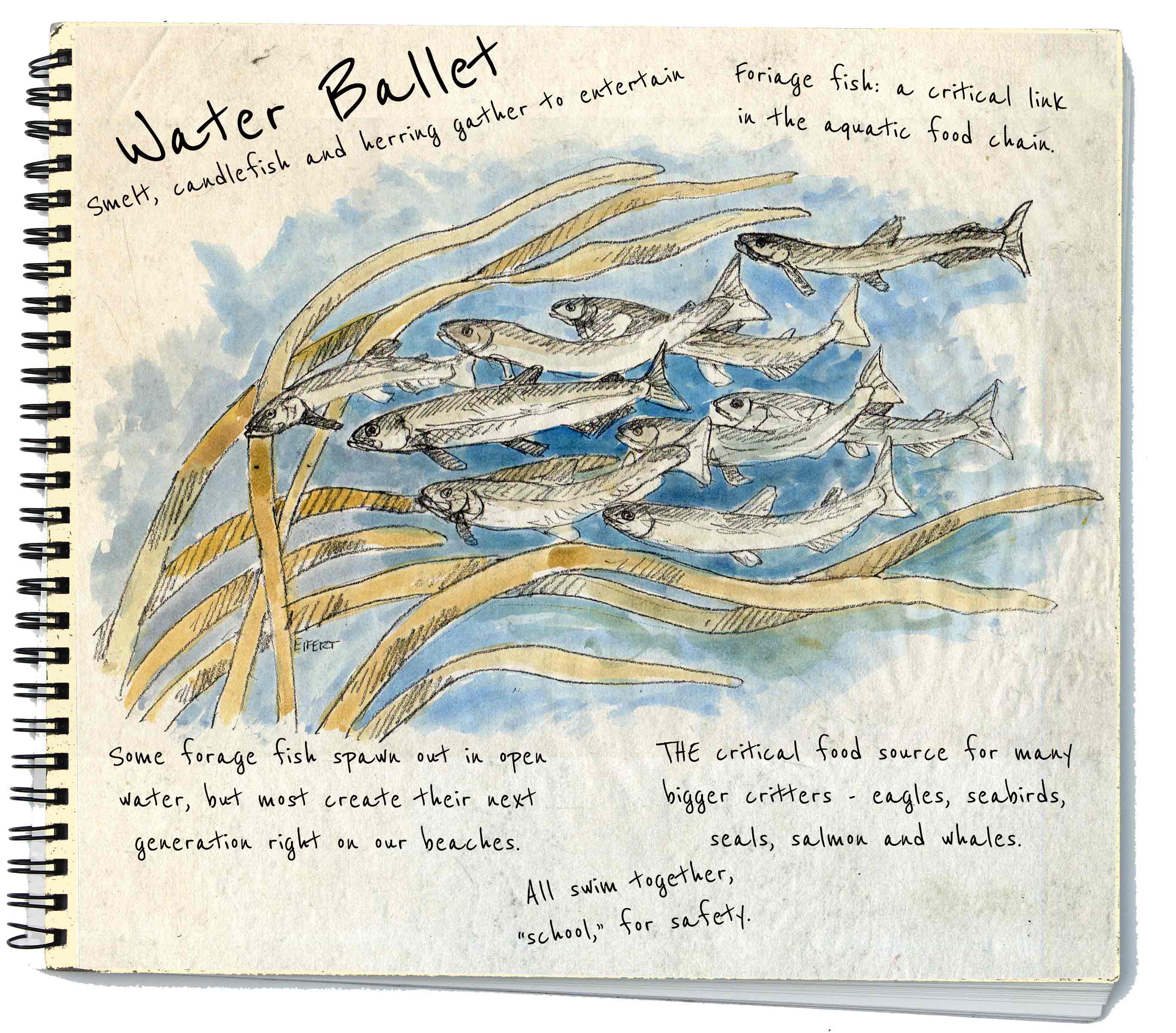
A month late, there’s an entirely new one on in the stores this week. Better late than never! This is the story that goes with the sketchbook page:
We’re all connected to nature, connected to the web of life. Sure, we all know that, but can you explain it to your mates? Here’s a story you can use. There are many types of small foraging fish in the Salish Sea, surf smelt, herring, candlefish, herring and others. All swim together, “school,” for safety, and they all eat microscopic animals floating in the water. In turn, they are THE critical food source for many bigger critters – eagles, seabirds, seals, salmon and whales – to name just a few. In summer, I often see gulls frantically diving on large forage fish ‘balls’, so add gulls to the list. If the forage fish were to disappear, so would all the rest – and that appears to be what’s happening around here – for lots of reasons. To explain a bit more, take surf smelt. Most spawn on beaches at high tide where they lay eggs on sand or gravel. The eggs can tolerate occasional drying, and so smelt eggs are usually higher up on the beach. Sand lance and herring are lower and never exposed to air.
As you sail along, glance at the shoreline you’re passing. Are there human-placed boulders? Concrete walls? Old creosote-laden pilings or berms? All these are death to surf smelt because there isn’t sufficient beach for spawning. If there is some room below the barriers, imagine what will happen when Climate Change raises sea level a bit more. Forage fish occupy every marine and estuarine habitat in the Salish Sea – at least the ones unaltered by us. Some forage fish spawn out in open water, but most create their next generation right on our beaches. Surf smelt eggs have been documented on 275 miles of Puget Sound shorelines, about 10% of the total. I’m a painter of nature, as you can see, and, as part of much bigger projects, in the past two years I’ve created outdoor exhibits for 12 locations interpreting shoreline restoration. Changes are helping these small fish, but is it enough to save salmon and orcas?
And here’s the page on my website:
http://larryeifert.com/published-writings-and-art/salish-sea-stories-48-north-magazine/2018-03/
Thanks for reading this week – and the entire year for that matter.
Larry Eifert
Here’s the blog on the web. And here’s my Facebook fan page. I post lots of other stuff there.
Click here to go to our main website – with jigsaw puzzles, prints, interpretive portfolios and lots of other stuff.
Nancy’s web portfolio of stunning photography
And here to go to Virginia Eifert’s website. Her books are now becoming available as Amazon Kindle books.